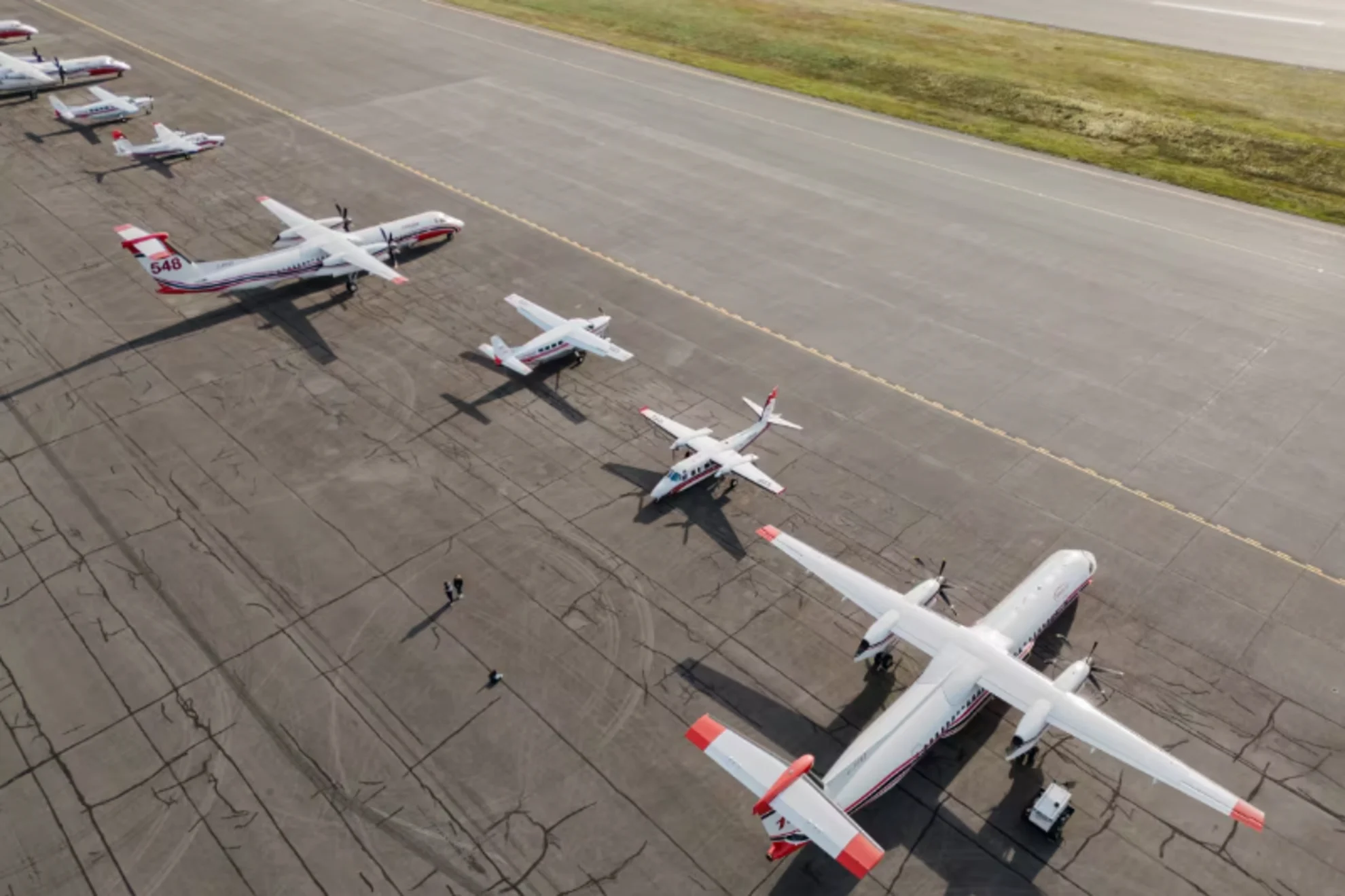
How to fight wildfires from the air
Wildfire season has already begun in Canada, and all signs suggest this year could be worse than the record-breaking season of 2023.
Aerial firefighting teams are a key weapon in fighting blazes at this scale.
Alberta averages about 143 air tanker missions a year, but in 2023, the province flew a whopping 502. In a normal season, the British Columbia Wildfire Service runs an average of 560 tanker missions; last year, it flew 816.
With more than 90 pilots and 70 aircraft, B.C.-based Conair says it operates the largest privately owned, fixed-wing aerial firefighting fleet in the world. It contracts out amphibious and land-based tankers, along with pilots, to both Western provinces, as well as to Yukon and Alaska.
Every spring, pilots complete ground, on-wing and aerial simulation training sessions at Conair before they're deployed. This year, CBC News accompanied pilots as they began their training sessions at Conair's headquarters in Abbotsford, B.C.
CANADA'S WILDFIRES: Visit The Weather Network's wildfire hub to keep up with the latest on the active start to wildfire season across Canada.
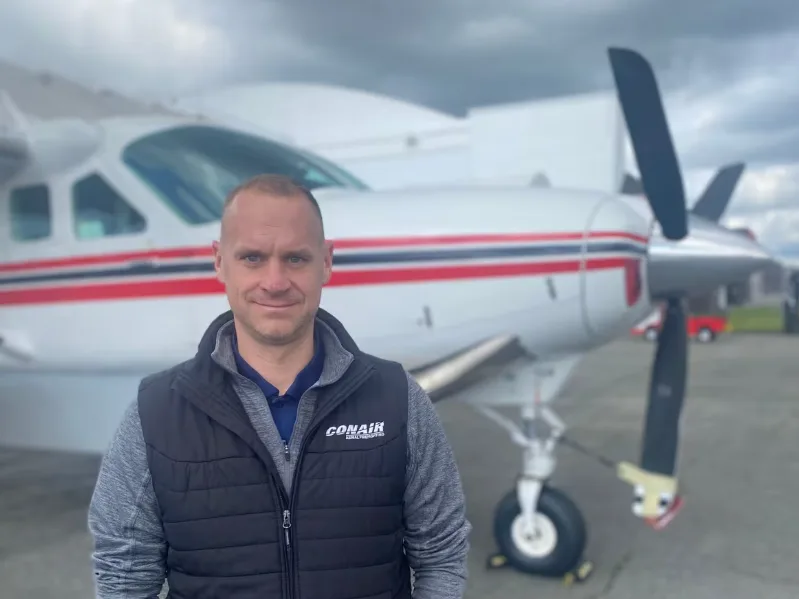
Ryan Gahan is fleet manager of air attack operations at Conair, which is based in Abbotsford, B.C. (Submitted by Conair)
"We're trying to simulate what we're actually going to do in real life," said Ryan Gahan, fleet manager of Conair's air attack operations.
The purpose of an aerial assault is to cool a fire down or limit its spread, so ground crews can safely move in to contain it. But attacking a fire from the air requires careful choreography.
WATCH: It's wildfire season, pack your 'grab-and-go' box with these items
DON'T MISS: Top five ways human-caused wildfires start
'It's mission-style flying' The training mission CBC witnessed involved a Cessna aircraft — named "the bird dog" — and a Dash 8-400 air tanker. The bird dog is the lead plane, determining the plan of attack and directions for the tanker, which drops the retardant or water.
Gahan demonstrated how the bird dog will emit a stream of smoke indicating the drop location for the retardant (which is typically a chemical compound that slows combustion). The tanker then makes its approach and drops its load on the target.
RELATED: Wildfires prompt alerts for hamlet near Fort McMurray, Cold Lake First Nations
While recreational aircraft try to stay far apart, aerial firefighters can fly fairly close together.
"It's mission-style flying, working together to accomplish a goal," Gahan said, noting that conditions can deteriorate quickly over a fire, with smoke, debris and wind all being factors.
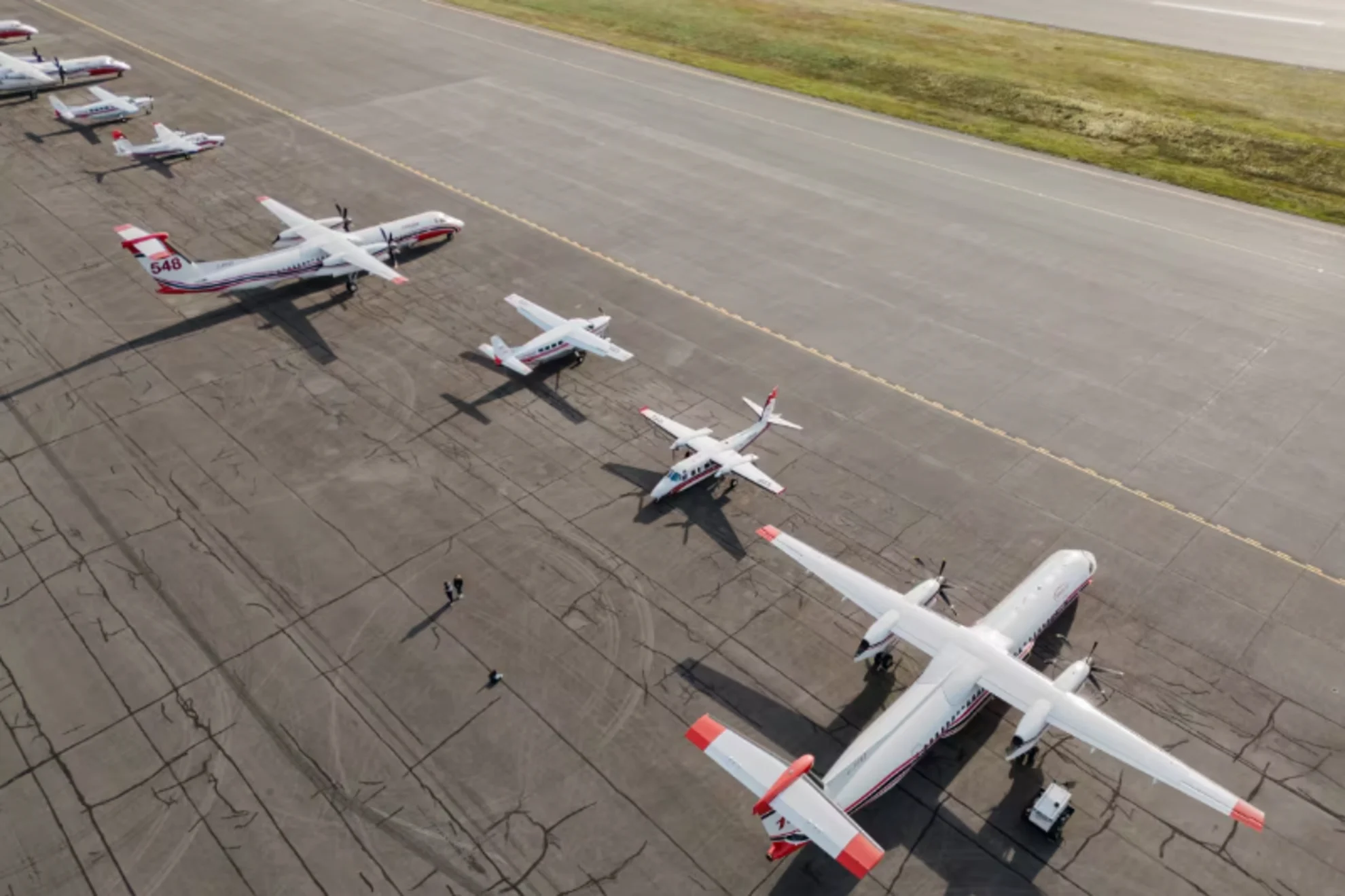
Aircraft parked outside Conair's hangars at Abbotsford International Airport. (Gian Paolo Mendoza/CBC)
Pilots usually need 3,000 to 4,000 hours of flying before they can train to fight fires.
Precision is key.
"You usually drop at 100 feet above the [tree] canopy,'" Gahan said. "You want the retardant or the water to drop [and] lose all forward momentum, and then rain down on the trees. If you drop too high, you don't get the accuracy."
Converting old planes
With increasing fires comes increased demand for aircraft.
Conair is also converting Dash 8-400 passenger airliners into air tankers. The Dash 8-400 is currently not in production, so Conair scours the world to purchase gently used ones.
RELATED: Alberta's wildfire season has begun. Here's how its 500 new firefighters are preparing for it
Among other things, the company strips the aircraft of seats and builds and affixes a 10,000-litre tank to the outside of the plane.
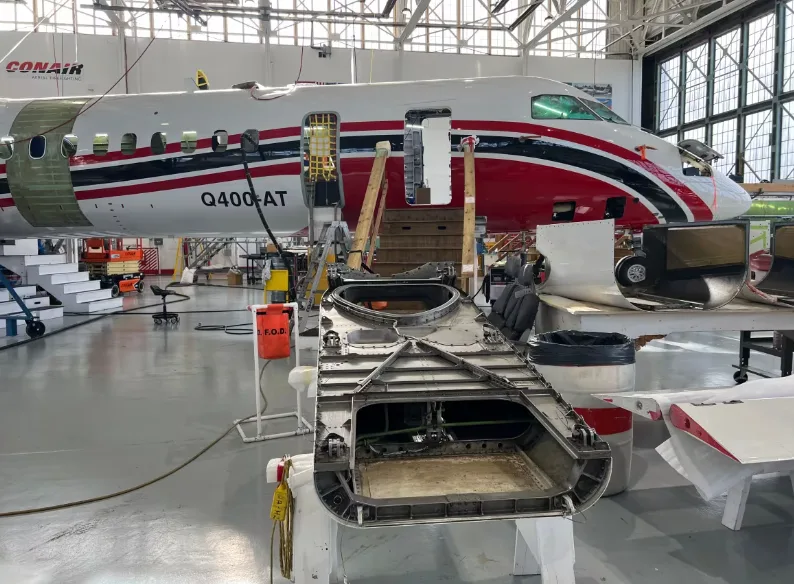
Conair is converting Dash 8-400 passenger airliners into air tankers. They used to do one a year, but now are doing one every 75 days. (Mia Sheldon/CBC)
Conair used to refurbish one a year, but has increased capacity to one every 75 days — or five a year.
Jeff Berry, vice-president of business development at Conair, calls this "a Canadian success story," as the refurbished planes use Pratt & Whitney engines and a De Havilland airframe.
"It's extremely powerful," Berry said of the Dash 8-400, which has two 5,000-plus horsepower turboprop engines, and the ability to take off on shorter runways.
"It really becomes a great fit for almost every aerial firefighting need in the world."
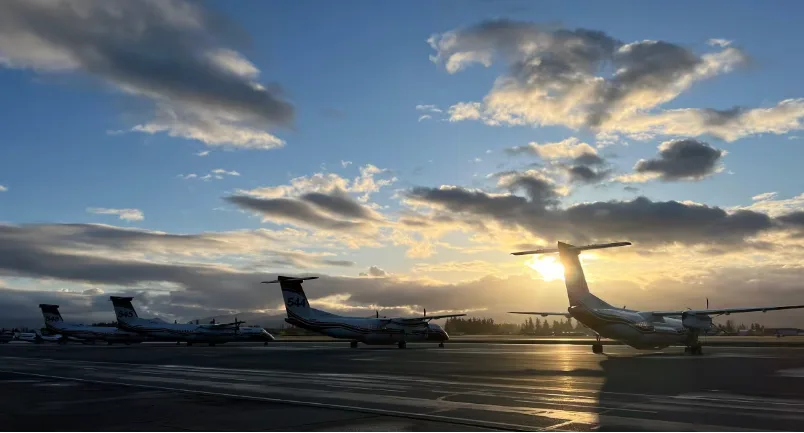
Based in Abbotsford, B.C., Conair says it manages the largest fleet of privately owned aerial firefighting aircraft in the world. (Mia Sheldon/CBC)
WATCH: This is what it takes to become wildland firefighter in Alberta
This article was originally written by Mia Sheldon and published for CBC News.
Thumbnail image courtesy: Gian Paolo Mendoza/CBC









